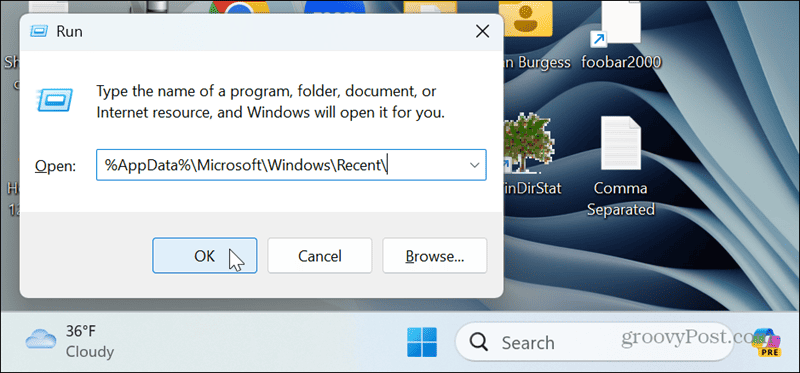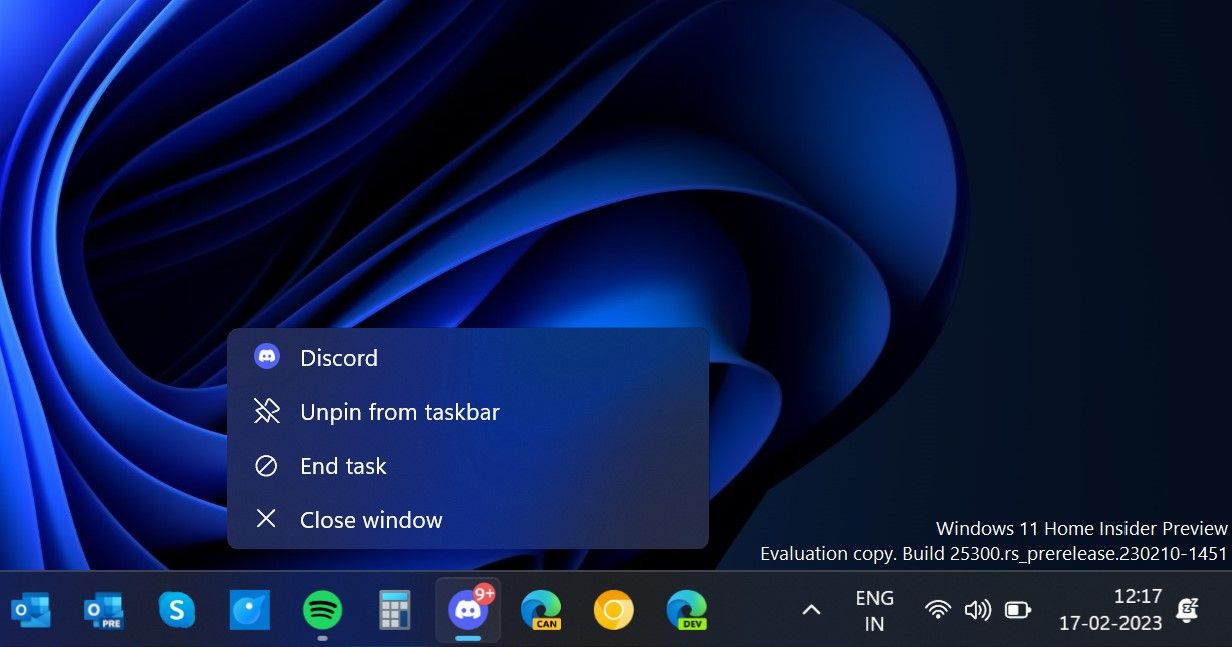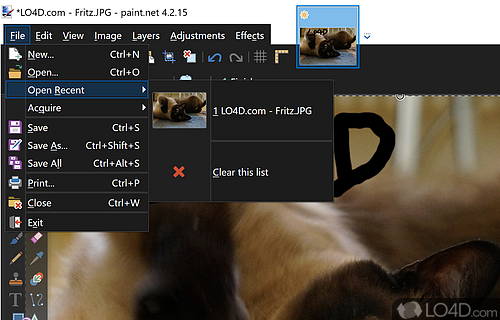If you’ve ever experienced the frustrations of saving files in Windows, then the Explorer Dialog Path Selector is a tool you’ll want to explore. This innovative file management tool streamlines the often cumbersome Windows file saving process by allowing you to quickly access paths from other open Explorer windows. Whether you’re trying to save a crucial document using the “Save As” function or need to navigate complex directory structures, this app puts your desired locations right at your fingertips. With the ability to set up custom hotkeys for seamless navigation, it transforms the tedious task of file saving into a hassle-free experience. Developed by popular YouTuber ThioJoe, the Explorer Dialog Path Selector helps you optimize your workflow and enhances your overall file management strategy.
Navigating file storage in Windows can often feel overwhelming, especially when the default “Save As” dialog seems determined to keep you confined to Microsoft’s preferred folders. The Explorer Dialog Path Selector provides an effective solution to this challenge by enhancing your file saving capabilities. By integrating options for custom shortcuts and quick access to any path you have open in similar navigation windows, this application allows for more intuitive file management. Whether you’re saving important documents or organizing creative assets, it empowers users with a direct pathway to their files. A creation of ThioJoe, this innovative tool not only boosts productivity but also brings a sense of order to the often-chaotic world of file saving.
Streamlining File Management in Windows
Navigating through convoluted directories in Windows can be a daunting task, especially when you need to quickly access specific folders for file saving. The default locations suggested by Microsoft often do not align with user preferences, which can lead to frustration. For instance, the ‘Save As’ dialog box typically defaults to OneDrive or the Documents folder, making it cumbersome for users who frequently save files in varied locations. This disconnect between user needs and operating system design highlights the importance of an effective file management tool to streamline the process.
Using tools specifically tailored for file management can significantly enhance user experience on Windows. With proper tools, users can bypass the limitations of the default ‘Save As’ dialog and save their files faster. These tools can help set up custom shortcuts or hotkeys, thereby allowing immediate access to essential directories across various workflows. Such a shift not only improves efficiency but also reduces the likelihood of losing track of where files are saved.
Discovering the Explorer Dialog Path Selector
The Explorer Dialog Path Selector is an innovative solution for users frustrated with the limitations of the standard ‘Save As’ dialog in Windows. This app allows you to quickly switch between open Explorer windows, enabling you to choose a save path with a simple keystroke. You can customize your hotkey — whether it be a function key or even your middle mouse button — to make the file saving process more intuitive and user-friendly. By integrating this tool, users can navigate their file structure in a more organized manner.
Users can also benefit from the tutorial provided by ThioJoe, a YouTuber known for his insightful tech guidance. His video goes in-depth into how the Explorer Dialog Path Selector works, illustrating its functionality and showcasing user tips for maximizing its potential. By following along, users can learn how to optimize their file saving practices and ultimately regain control over their file management.
Optimizing File Saving with Custom Hotkeys
Implementing custom hotkeys for file saving in Windows can revolutionize your workflow, especially for individuals who deal with a multitude of files daily. With the right setup, users can eliminate the need to retrace their steps through various folders and directories each time they want to save a file. This process becomes even smoother when combined with tools like the Explorer Dialog Path Selector, which seamlessly integrates custom hotkeys into the ‘Save As’ dialog process. Such enhancements not only save time but also reduce the cognitive load associated with file management.
Furthermore, the potential for developing an intuitive file saving habit through custom hotkeys encourages Windows users to explore their operating system’s full capabilities. By linking frequently used directories to a single keystroke, users can create a more efficient and enjoyable computing experience. This is particularly beneficial for freelancers and creative professionals who often juggle multiple projects and file locations, streamlining their workflow significantly.
ThioJoe’s Contribution to Windows Efficiency
ThioJoe, a prominent YouTuber, has made significant contributions to the tech community by providing practical solutions for everyday problems faced by Windows users. His focus on applications like the Explorer Dialog Path Selector showcases a proactive approach to enhancing user experience. By demonstrating how to implement this app effectively, he has helped a multitude of viewers improve their file saving practices and understand the intricacies of Windows file management.
Moreover, ThioJoe’s detailed video tutorials empower users to approach technology with confidence. Each video is meticulously crafted to ensure that even those with limited technical knowledge can grasp the concepts being presented. This demystification of file management tools encourages users to take charge of their computing environment, transforming their interactions with Windows from frustration to efficiency.
Enhancing Productivity through Better File Management Tools
In a digital landscape overflowing with files, effective file management is crucial for maintaining productivity. Windows users often find themselves navigating through layers of directories, trying to remember where they saved essential documents. Embracing better file management tools can significantly reduce this burden, allowing users to retrieve their files quickly and effortlessly. Innovations such as the Explorer Dialog Path Selector offer users a streamlined way to manage their files, leading to a more organized and efficient work environment.
Moreover, investing time to learn about and incorporate these tools into daily activities can yield substantial long-term benefits. By simplifying the ‘Save As’ process and customizing workflows, users can free up cognitive resources for more important tasks instead of searching for files. This shift not only improves individual productivity but also contributes to a more harmonious digital workspace, where finding files is no longer a source of stress.
How ‘Save As’ Dialogs Affect User Experience
The ‘Save As’ dialog is a critical component of file management in Windows, yet it often leaves much to be desired in terms of usability. Often, users are presented with a predefined saving pathway that does not accommodate their personal organization preferences. This often leads to confusion and inefficiency, forcing users to remember where they’ve saved their files or sift through folders repeatedly. Understanding this impact can lead to better solutions and a re-evaluation of how users interact with their file management systems.
Improving the ‘Save As’ experience can translate to an overall enhancement of productivity and user satisfaction on Windows. Encouraging users to adopt tools like the Explorer Dialog Path Selector can provide the flexibility they need. Users can save documents in the intended locations without the dread of navigating through an awkward interface. With such improvements, users can look forward to a much smoother experience in managing their files.
Navigating Windows File Saving Challenges
Windows file saving challenges can often stem from the concentration of options that fails to address user needs effectively. When users attempt to save files in less conventional or frequently used directories, they can feel lost amidst the many layers of folders presented in the ‘Save As’ dialog. This complexity can hinder productivity, especially for professionals who need immediate access to certain files without wasting precious time on navigational dilemmas.
By highlighting these challenges, we can advocate for user-friendly file management tools that simplify saving processes. Deploying solutions like the Explorer Dialog Path Selector can help alleviate the burdensome experience of searching for folders and files. Such innovations empower users to customize their workflows, leading to a more agreeable and functional interaction with their computer systems.
The Future of File Management in Windows
As technology evolves, so too must the tools we utilize for effective file management. Windows has made strides in recent updates, but the experience still leaves ample room for improvement in user interactions, especially within the ‘Save As’ dialog boxes. The integration of innovative apps like the Explorer Dialog Path Selector indicates a growing recognition of these needs, paving the way for a future where file management is intuitive and efficient.
The future trends in file management are likely to revolve around user-centered design, where enhancements will focus on minimizing complexity and maximizing user autonomy. By adapting to these trends and incorporating user feedback into the development cycle, Windows can continue to refine its file management systems, ensuring that saving and accessing files becomes a seamless part of everyday tasks.
Tips for Customizing Your Windows File Management Experience
Customizing your Windows file management experience can vastly improve efficiency and reduce frustration. One effective method is to integrate tools that enable quick access to frequently used folders. Using a tool like the Explorer Dialog Path Selector expands your ability to manage file saving locations with ease, allowing you to create hotkeys for your specific needs. These customizations can tailor your file management system to suit your workflow, making everything from drafting documents to organizing graphics feel much smoother.
Additionally, you can take further steps to optimize your experience by creating a structured system for organizing files. This might include naming conventions that make sense for your projects or utilizing cloud storage options for easy access across devices. By combining these strategies with dedicated tools, you can significantly enhance your overall productivity when managing and saving files on your Windows system.
Frequently Asked Questions
What is the Explorer Dialog Path Selector?
The Explorer Dialog Path Selector is a file management tool designed to enhance the ‘Save As’ and ‘Open’ dialog windows in Windows. It allows users to set a custom hotkey that instantly navigates to any folder path open in other Explorer windows, simplifying file saving and retrieval.
How can I customize hotkeys for Windows file saving using the Explorer Dialog Path Selector?
To customize hotkeys for Windows file saving with the Explorer Dialog Path Selector, open the app and choose a hotkey—like a function key or mouse button. This hotkey will allow you to quickly jump to any active path in your Explorer windows, streamlining the process of saving files.
How does the Explorer Dialog Path Selector improve the Windows ‘Save As’ dialog experience?
The Explorer Dialog Path Selector greatly improves the Windows ‘Save As’ dialog experience by eliminating the need to sift through multiple directories. By enabling instant access to any folder currently open in Explorer, it reduces the time and frustration often associated with file management.
Can I use the Explorer Dialog Path Selector to save files to network drives?
Yes, absolutely! The Explorer Dialog Path Selector allows you to navigate to network drives just as easily as local folders. Once you set your desired path using the custom hotkey, saving files to a network location becomes much more straightforward.
Who created the Explorer Dialog Path Selector?
The Explorer Dialog Path Selector was created by YouTuber ThioJoe, known for developing applications that improve the Windows user experience. You can find a detailed video by ThioJoe that explains how the app works and its features.
Is the Explorer Dialog Path Selector compatible with Windows 10 and Windows 11?
Yes, the Explorer Dialog Path Selector is designed to work seamlessly with both Windows 10 and Windows 11, enhancing file management in the ‘Save As’ and ‘Open’ dialog across these operating systems.
Where can I download the Explorer Dialog Path Selector?
You can download the Explorer Dialog Path Selector by visiting the official download page, where the .exe file is available for installation. This tool can dramatically improve how you handle file saving in Windows.
What are the benefits of using a file management tool like the Explorer Dialog Path Selector?
Using a file management tool like the Explorer Dialog Path Selector simplifies the process of file saving by allowing quick navigation to frequently used folders. It significantly reduces the frustration and time spent in the cumbersome Windows ‘Save As’ dialog.
Can the Explorer Dialog Path Selector help me with file organization?
Yes! By making it easier to access your folders during file saving, the Explorer Dialog Path Selector indirectly aids in better file organization, allowing you to store files in the correct locations without confusion.
Are there any alternatives to the Explorer Dialog Path Selector for managing the Windows ‘Save As’ dialog?
While the Explorer Dialog Path Selector is a unique solution, there are other tools available that aim to streamline file management in Windows, but this specific app stands out for its custom hotkey functionality, directly improving the ‘Save As’ experience.
| Key Points | |
|---|---|
| Common Frustrations | Windows encourages saving in default locations (OneDrive, Documents folder), making file access challenging. |
| Problems with ‘Save As’ | Navigating through multiple directories to save files can be time-consuming and frustrating. |
| Explorer Dialog Path Selector | This app allows users to jump directly to any path in open Explorer windows using a custom hotkey. |
| Benefits of Using the App | Makes saving files straightforward, removing the hassle of navigating folders. |
Summary
Explorer Dialog Path Selector is an invaluable tool for anyone struggling with the built-in file navigation in Windows. With this application, users can quickly move to any open file path directly from the ‘Save As’ dialog, saving them time and effort. By incorporating a custom hotkey, the app greatly optimizes the tedious process of file saving, transforming it into a seamless experience. For frequent file savers and those with a multitude of Explorer windows open, this is a game-changer.



